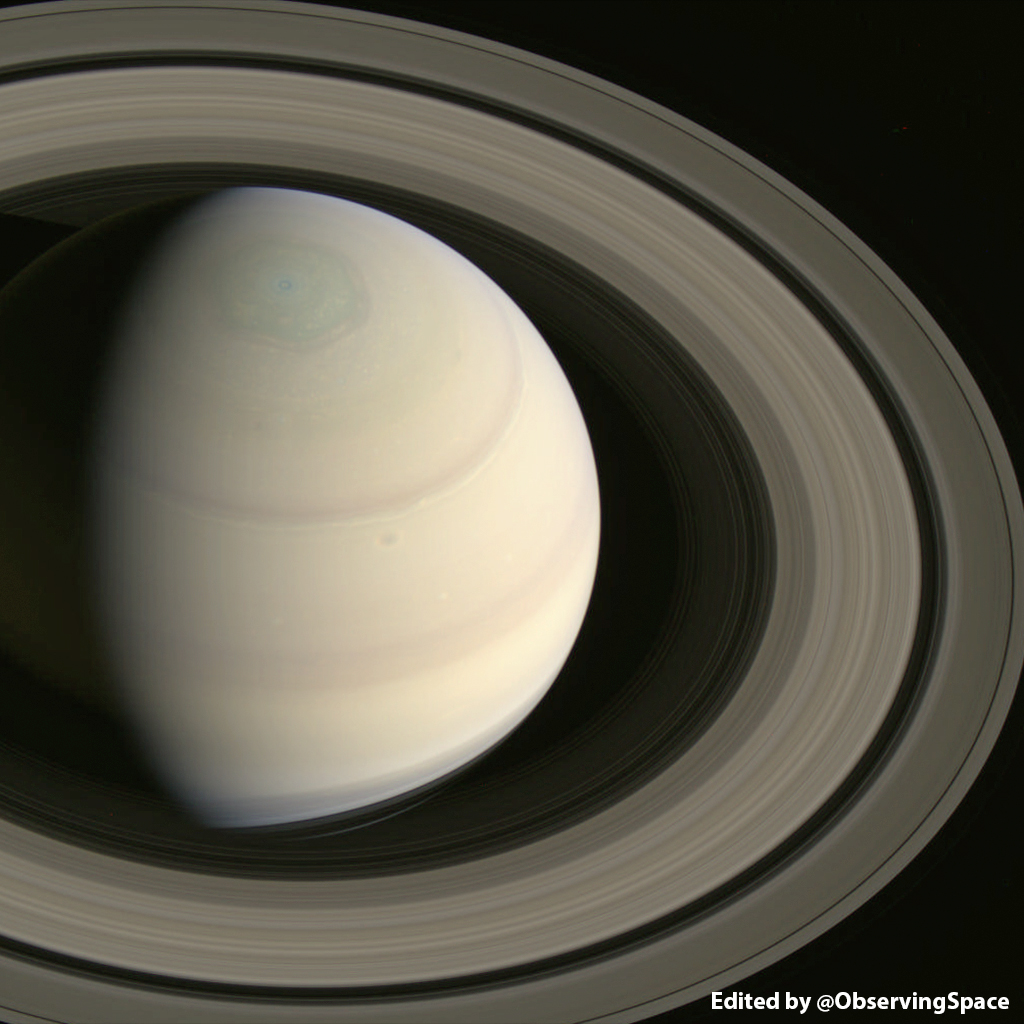
This is a RGB composite created from three images that Cassini captured of Saturn a few days ago. Cassini was approximately 1,825,982 miles (2,938,633 kilometers) away from Saturn at the time the images were taken.
Credit: NASA/JPL/SSI

The three pyramids at Giza, Khufu, Khafre, and Menkaure, were photographed by NASA astronaut Reid Wiseman from the International Space Station. The Great Sphinx at Giza is barely visible within the photo (follow the road below the Great Pyramid toward the east). Three smaller pyramids, the queens’ pyramids, appear below the Pyramid of Menkaure, the smallest of the three larger pyramids. Wiseman posted the telephoto to his Twitter feed on Friday.
Credit: NASA, Reid Wiseman (@astro_reid)

This new NASA/ESA Hubble Space Telescope image shows a beautiful spiral galaxy known as PGC 54493, located in the constellation of Serpens (The Serpent). This galaxy is part of a galaxy cluster that has been studied by astronomers exploring an intriguing phenomenon known as weak gravitational lensing.
This effect, caused by the uneven distribution of matter (including dark matter) throughout the Universe, has been explored via surveys such as the Hubble Medium Deep Survey. Dark matter is one of the great mysteries in cosmology. It behaves very differently from ordinary matter as it does not emit or absorb light or other forms of electromagnetic energy — hence the term “dark.”
Even though we cannot observe dark matter directly, we know it exists. One prominent piece of evidence for the existence of this mysterious matter is known as the “galaxy rotation problem.” Galaxies rotate at such speeds and in such a way that ordinary matter alone — the stuff we see — would not be able to hold them together. The amount of mass that is “missing” visibly is dark matter, which is thought to make up some 27 percent of the total contents of the Universe, with dark energy and normal matter making up the rest. PGC 55493 has been studied in connection with an effect known as cosmic shearing. This is a weak gravitational lensing effect that creates tiny distortions in images of distant galaxies.
ESA/Hubble & NASA, Acknowledgement: Judy Schmidt

NASA astronaut Reid Wiseman tweeted this photo from the International Space Station on Tuesday morning, Sept. 2, 2014. “My favorite views from #space – just past #sunrise over the ocean,” the Expedition 40 astronaut tweeted.
The Expedition 40 crew has been busy aboard the Space Station, recently performing health checks and humanoid robot upgrades. In the meantime, a trio of orbital residents is packing up gear as they prepare to return home in less than two weeks. Commander Steve Swanson powered down and stowed Robonaut 2 after wrapping up its mobility upgrades this week. He installed new legs on the humanoid robot including external and internal gear as well as cables. This sets the stage for more upgrades in the fall before Robonaut takes its first steps as an assistant crew member. Robonaut was designed to enhance crew productivity and safety while also aiding people on Earth with physical disabilities.
Image Credit: NASA/Reid Wiseman (@astro_reid)